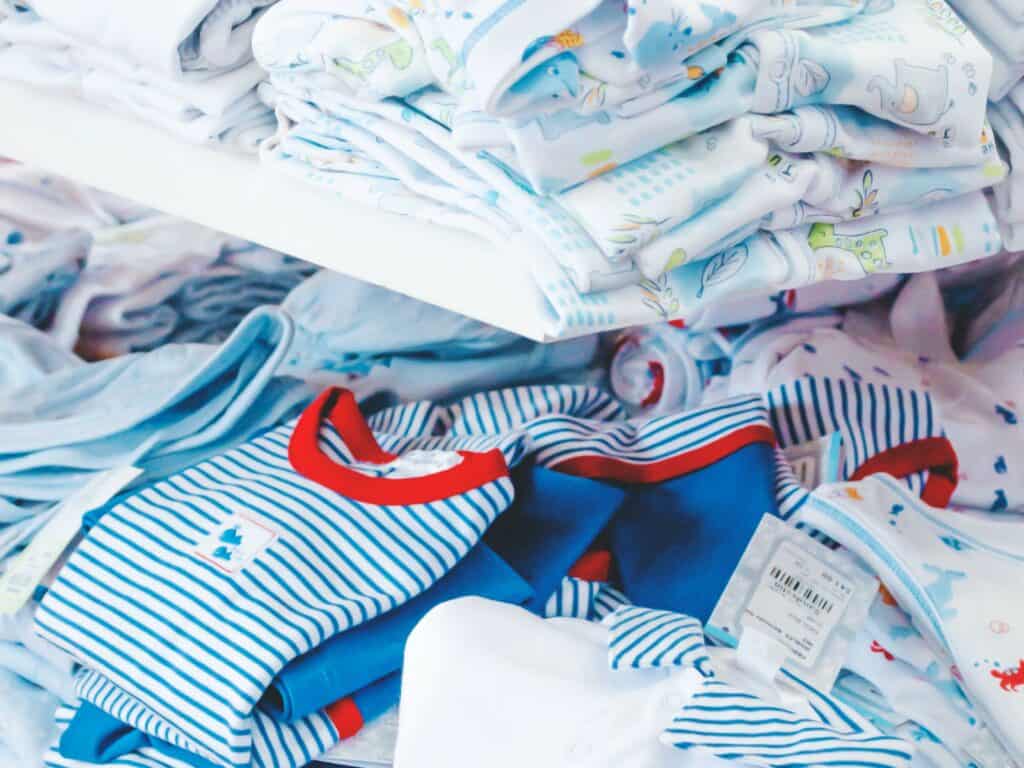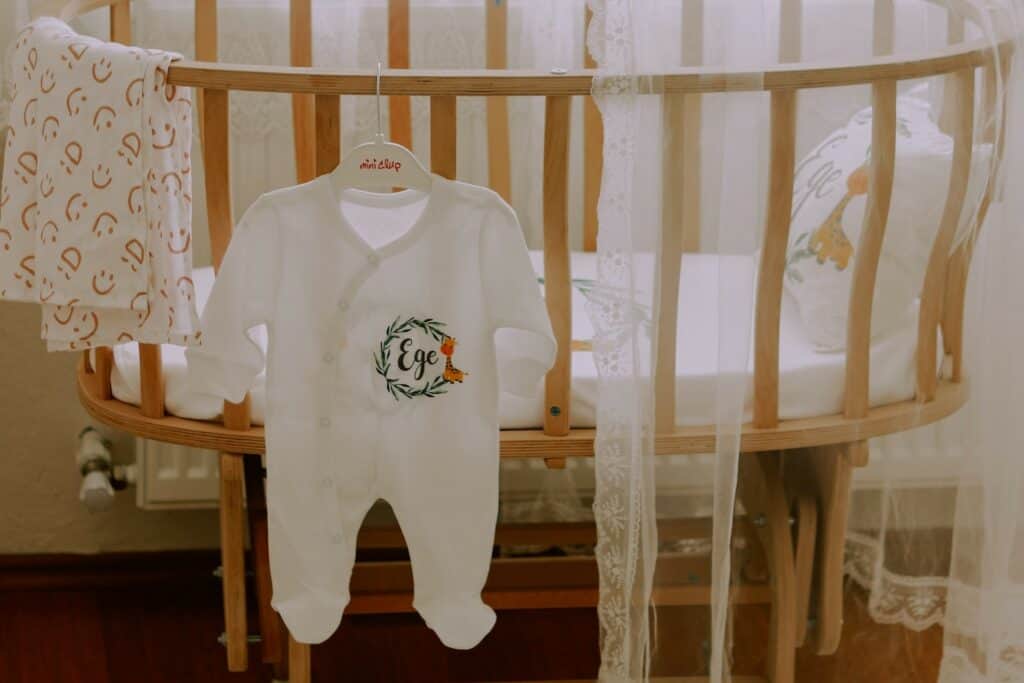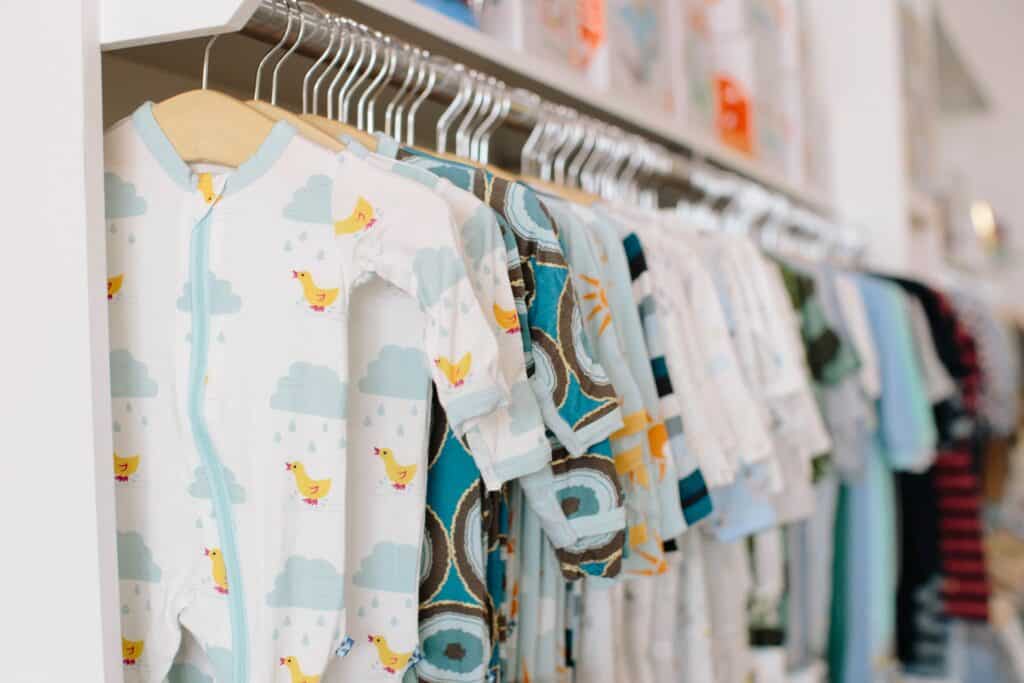Parents and caregivers often find themselves confused when it comes to buying clothes for children. One of the most common questions is the difference between size 6 and 6x. While they may seem similar, there are differences in the fit and measurements that can make a big difference. Understanding these differences can help ensure that children are comfortable and properly dressed.
Size 6 and 6x are both for children around the age of 6, but there are some key differences. Size 6 is typically for children who are around 45-48 inches tall and weigh between 45-50 pounds. Size 6x, on the other hand, is for children who are slightly taller and heavier, around 50-52 inches tall and 50-60 pounds. The fit of the clothing can also differ, with 6x being slightly longer and wider than size 6.
Key Takeaways
- Size 6 and 6x are both for children around 6 years old, but there are differences in height and weight requirements.
- Size 6 is typically for children who are around 45-48 inches tall and weigh between 45-50 pounds, while size 6x is for children who are slightly taller and heavier, around 50-52 inches tall and 50-60 pounds.
- The fit of the clothing can also differ, with 6x being slightly longer and wider than size 6.
Understanding Clothing Sizes
When it comes to children’s clothing, it can be challenging to determine the right size. Parents often find themselves confused between size 6 and 6x. However, understanding clothing sizes can make shopping for kids a lot easier.

Standardized Measurements
Clothing sizes are determined by standardized measurements. These measurements are based on the body proportions of the average child at a particular age. The sizing chart varies from brand to brand, but most follow a similar pattern.
Sizing Systems
There are two primary sizing systems for children’s clothing – alpha and numeric. The alpha system uses letters such as S, M, L, and XL, while the numeric system uses numbers such as 2T, 3T, 4T, 5, 6, etc.
The numeric system is more precise and provides a more accurate fit. However, it can be confusing for parents who are not familiar with the system.
Size 6 and 6x
Size 6 is typically for children aged 5-6 years old, while size 6x is for children aged 6-7 years old. The difference between the two sizes is the length and width of the clothing.
Size 6x is slightly larger than size 6, with longer sleeves and a wider waistband. This size is designed for kids who have outgrown size 6 but are not yet ready for size 7.
Sizing Charts
It’s essential to refer to the sizing chart provided by the brand when shopping for children’s clothing. The sizing chart can help determine the right size based on the child’s measurements.
Parents should also keep in mind that children’s clothing sizes can vary depending on the brand. It’s always a good idea to try on the clothes before purchasing to ensure the perfect fit.
Overall, understanding clothing sizes can help parents make informed decisions when shopping for their little ones.
Size 6 and 6x: A Comparison
When it comes to children’s clothing sizes, parents can sometimes get confused about the difference between size 6 and 6x. While both sizes are meant for children around the same age range, there are some key differences that parents should be aware of.

One of the main differences between size 6 and 6x is the dimensions. Size 6 clothing is designed for children who are around 6 years old and have a chest size of approximately 25 inches, a waist size of 22 inches, and a height range of 45-48 inches. On the other hand, size 6x clothing is designed for slightly older children who are around 6-7 years old and have a chest size of approximately 26 inches, a waist size of 23 inches, and a height range of 49-50 inches.
Another difference between size 6 and 6x is the length of the clothing. Size 6 clothing is typically shorter in length than size 6x clothing, which is designed to fit taller children. This means that if a child is on the taller side, it may be more appropriate to purchase size 6x clothing to ensure that the clothing fits properly.
In terms of chest and waist size, size 6 clothing is designed to fit children with a chest size of approximately 25 inches and a waist size of 22 inches. Size 6x clothing, on the other hand, is designed to fit children with a chest size of approximately 26 inches and a waist size of 23 inches. This means that size 6x clothing may be slightly looser in the chest and waist area for children who typically wear size 6 clothing.
Overall, while size 6 and 6x may seem similar at first glance, there are some key differences that parents should be aware of when purchasing clothing for their children. By understanding the differences in dimensions, length, chest size, and waist size, parents can ensure that they are purchasing the right size clothing for their child.
Growth and Size Changes
Kids grow at different rates and in different patterns, which can make it difficult to determine the right size for them. When it comes to sizes 6 and 6x, the main difference is the fit. Size 6 is typically designed to fit a child who weighs between 42 and 48 pounds and is around 45-47 inches tall. Size 6x, on the other hand, is designed to fit a child who weighs between 49 and 54 pounds and is around 47-49 inches tall.
Growth patterns can vary greatly between boys and girls. Girls tend to have growth spurts earlier than boys and reach their adult height earlier. Boys, on the other hand, tend to have a longer period of growth and reach their adult height later. This can impact the size and fit of clothing, especially during growth spurts.
It’s important to keep in mind that weight and height are not always the best indicators of size. Children can have different body shapes and proportions, which can affect how clothing fits. For example, a child who is tall and thin may need a different size than a child who is shorter and more muscular.
When it comes to sizing, it’s always best to try on clothing to ensure the best fit. Some brands may run larger or smaller than others, so it’s important to check the sizing chart and measurements before making a purchase. Additionally, it’s important to keep in mind that children can quickly outgrow clothing, so it may be necessary to purchase a larger size to accommodate growth.
Gender Differences in Sizing
When it comes to children’s clothing, sizing can be confusing, especially when it comes to the difference between size 6 and 6x. While both sizes are designed for girls, there are some differences in the way they are cut and tailored.
Generally speaking, size 6 is designed for girls who are around 6 years old, while size 6x is intended for girls who are slightly older, typically around 6-7 years old. However, the main difference between the two sizes is in the way they are cut.
Size 6 clothing is typically cut to fit more closely to the body, with a narrower waist and shorter sleeves and pant legs. Size 6x clothing, on the other hand, is cut slightly looser, with a wider waist and longer sleeves and pant legs.
Another key difference is in the way the clothing is designed to fit the body. Size 6 clothing is typically designed to fit a girl who is more slender, with a straighter body shape. Size 6x clothing, on the other hand, is designed to fit a girl who is starting to develop a more curvy figure, with a slightly wider waist and fuller hips.
It’s also worth noting that there can be some variation in sizing between different clothing brands, so it’s always a good idea to check the specific measurements provided by the manufacturer before making a purchase.
Overall, while there are some differences between size 6 and 6x clothing, both sizes are designed for girls and should fit comfortably and appropriately for their age and body shape.
The Role of Manufacturers and Standards
Manufacturers play a significant role in determining the sizes of children’s clothing. They use various size charts to create clothing that fits children of different ages and sizes. However, the lack of standardization in the clothing industry can result in confusion among consumers, especially when it comes to sizes 6 and 6x.

In the United States, there are no universal size standards for children’s clothing. Each manufacturer has its own set of size charts, which can vary significantly from one brand to another. This lack of uniformity can make it challenging for parents to determine which size to purchase for their child.
Manufacturers often base their size charts on a combination of factors, including the child’s age, height, weight, and body type. However, some manufacturers may use different criteria or measurements, which can lead to inconsistent sizing across brands.
To help address this issue, some companies have developed their own sizing standards. For example, the Children’s Place uses a size chart that includes both traditional sizes (such as 6) and extended sizes (such as 6x). This allows for a more precise fit for children who fall between traditional sizes.
In conclusion, manufacturers and standardization play a crucial role in determining the sizes of children’s clothing. While there is no universal size standard in the United States, some companies have developed their own sizing charts to help consumers navigate the often-confusing world of children’s clothing sizes.
E-commerce and Sizing
When shopping for children’s clothing online, it can be challenging to determine the correct size to order. Many online retailers use different sizing standards, which can make it difficult to know whether a size 6 or a size 6x is the right choice.
E-commerce has made shopping for children’s clothing more convenient than ever before. However, it is important to keep in mind that sizing can vary between different brands and even between different styles within the same brand. This can be especially frustrating when shopping online, as customers are not able to try on the clothing before making a purchase.
To help mitigate this issue, many e-commerce retailers provide detailed sizing charts and measurements on their websites. These charts can be a valuable resource for parents who are trying to determine the correct size to order for their child.
It is also important to note that children’s clothing sizes typically correspond to age ranges, but this can vary between different brands. For example, a size 6 may be intended for children who are 5-6 years old, while a size 6x may be intended for children who are 6-7 years old. It is always a good idea to refer to the retailer’s sizing chart to ensure that the correct size is being ordered.
Overall, e-commerce has made shopping for children’s clothing more convenient than ever before, but it is important for parents to be aware of the potential sizing differences between different brands and styles. By referring to sizing charts and measurements provided by the retailer, parents can ensure that they are ordering the correct size for their child.
In-between Sizes
When shopping for children’s clothing, parents often encounter the dilemma of choosing between two sizes that seem to be in-between. This is particularly true when it comes to size 6 and 6x. While both sizes are intended for children around the same age, there are some key differences between them that parents should be aware of.
Size 6 is typically designed for children who are around 6 years old and have a height of about 45-48 inches and a weight of 45-50 pounds. On the other hand, size 6x is meant for slightly older children who are around 6-7 years old and have a height of about 48-50 inches and a weight of 50-55 pounds. As such, size 6x is typically a little bit larger than size 6.
When it comes to fit, parents should be aware that both size 6 and 6x can be either loose or tight depending on the brand and the specific garment. It’s always a good idea to check the size chart provided by the manufacturer before making a purchase. Additionally, some parents may prefer to go for a slightly looser fit to allow for growth, while others may prefer a more snug fit for better comfort and mobility.
In conclusion, when choosing between size 6 and 6x, parents should take into account their child’s height and weight, as well as the specific fit of the garment. While both sizes may be in-between, they can still offer a good fit for children of different sizes and ages.
Adults Vs Kids Sizes
When it comes to clothing sizes, there is a clear distinction between sizes for adults and sizes for kids. While adults have a range of sizes to choose from, kids’ sizes are typically grouped into age ranges.

One of the main differences between adult and kids’ sizes is that adult sizes are based on measurements, while kids’ sizes are based on age. This means that while an adult might wear a size 6, a child of the same age might wear a size 6x.
Another difference is that adult sizes tend to be more standardized across brands, while kids’ sizes can vary widely. This is because kids’ sizes are often based on the brand’s own sizing system, rather than a universal standard.
In terms of the fit, adult sizes are designed to fit the proportions of an adult body, while kids’ sizes are designed to fit the proportions of a child’s body. This means that kids’ sizes often have shorter sleeves and legs, narrower shoulders, and smaller waist and hip measurements than adult sizes.
When it comes to business and finance, the difference between adult and kids’ sizes is not particularly relevant. However, in the fashion industry, it is important to understand these differences in order to create clothing that fits well and is comfortable for the wearer.
Overall, while there are clear differences between adult and kids’ sizes, both serve their own purposes and are important in the world of fashion and clothing design.
Safety Considerations in Sizing
When it comes to choosing the right size for children’s clothing, safety should always be a top priority. In particular, parents and caregivers should be aware of the potential hazards associated with hazardous chemicals in clothing and how sizing can impact their exposure.
One important consideration is the use of flame retardants in children’s clothing. While these chemicals can help prevent fires, they have been linked to a range of health concerns, including cancer and developmental delays. As such, parents should look for clothing that is free of flame retardants whenever possible.
Another consideration is the use of dyes and other chemicals in clothing. These substances can cause skin irritation, allergic reactions, and other health problems, particularly in children with sensitive skin. To minimize the risk of exposure, parents should opt for clothing that is made from natural materials and is free of harsh chemicals.
In terms of sizing, it is important to avoid clothing that is too tight or too loose. Tight clothing can restrict movement and cause discomfort, while loose clothing can pose a strangulation hazard. Parents should also be aware that clothing that is too small may not provide adequate protection from the elements, while clothing that is too large can pose a tripping hazard.
Overall, choosing the right size for children’s clothing requires careful consideration of a range of factors, including safety concerns related to hazardous chemicals. By taking the time to select clothing that is both comfortable and safe, parents can help ensure that their children stay healthy and happy.
Related Posts:
Frequently Asked Questions
What is the difference between size 6 and 6x?
Size 6 and 6x are both sizes for children’s clothing, but they have some differences. Size 6 is intended for children who are around 6 years old, while size 6x is designed for children who are slightly bigger than a size 6, but not quite ready for a size 7.
What size should a 6 year old wear?
A 6-year-old child would typically wear a size 6 in children’s clothing. However, it’s important to keep in mind that every child is different, and their size may vary based on their height and weight. It’s always a good idea to take measurements and check the sizing chart before making a purchase.
Is 6x bigger than 6 in kids clothes?
Yes, 6x is generally considered bigger than size 6 in children’s clothing. Size 6 is intended for children who are around 6 years old, while size 6x is designed for children who are slightly bigger than a size 6, but not quite ready for a size 7.
What age is size 6x for?
Size 6x is typically designed for children who are around 6-7 years old, but again, it’s important to take measurements and check the sizing chart before making a purchase.
What does 6x mean in clothing?
The “x” in 6x refers to an “extra” size, indicating that it is slightly larger than a standard size 6. This sizing convention is used in some children’s clothing brands to accommodate children who are in between sizes.
Is size 6X a small?
Size 6x is generally considered a small size in children’s clothing, but it’s important to check the sizing chart to ensure the best fit for your child. Keep in mind that every child is different and may require a different size based on their height and weight.

Iesha is a loving mother of 2 beautiful children. She’s an active parent who enjoys indoor and outdoor adventures with her family. Her mission is to share practical and realistic parenting advice to help the parenting community becoming stronger.
